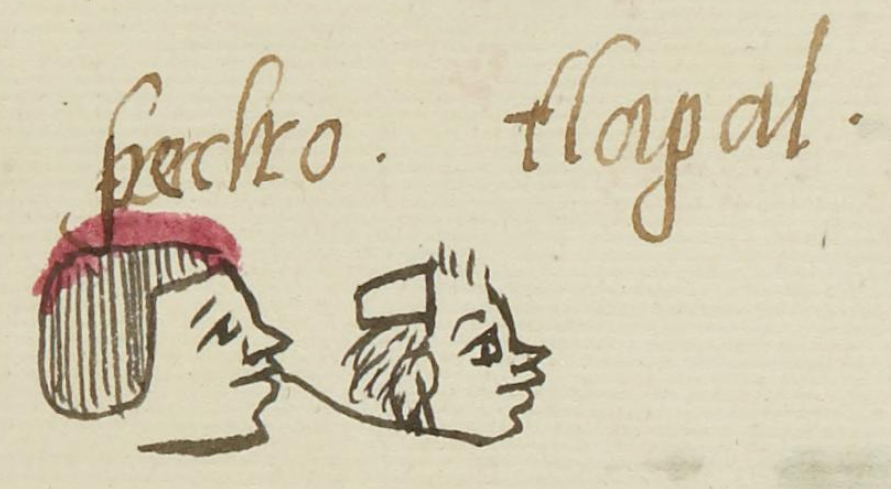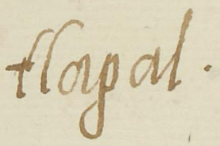Tlapal (MH642r)
This black-line drawing of the compound glyph for the personal name Tlapal (perhaps "Little Man") is attested here as a man's name. It shows a man's head in profile, facing toward the viewer's right. A rectangle appears on the side (-tlapal) of his head, which seems to be a phonetic reinforcement to the head that serves the other definition of tlapal ("little man"). But it may also be a bald spot, which could have a different reading.
Stephanie Wood
Another glyph for Tlapal has an oval-shaped hairless patch on the head. Both of these elements remain undeciphered. At least one other Tlapal name glyph shows a writing or painting implement, suggesting that one refers to “Paint” or “Color” (such as red). Several additional glyphs that start with Tlapal- include some red paint (see below). Two of these refer to an ethnicity, Tlapaltecatl, which seems to refer to a person from Tlapallan. Could these glyphs of men with partially shaved heads be a reference to that ethnicity?
Stephanie WOod
tlapal.
Tlapal
Stephanie Wood
1560
Jeff Haskett-Wood
calvo, pelón, al lado, nombres de hombres

-tlapal, on the side, https://nahuatl.wired-humanities.org/content/tlapal
tlapal, little man, https://nahuatl.wired-humanities.org/content/tlapal-0
tlapal(li), red, or color, https://nahuatl.wired-humanities.org/content/tlapalli
Matrícula de Huexotzinco, folio 642r, World Digital Library, https://www.loc.gov/resource/gdcwdl.wdl_15282/?sp=366st=image.
This manuscript is hosted by the Library of Congress and the World Digital Library; used here with the Creative Commons, “Attribution-NonCommercial-ShareAlike 3.0 License” (CC-BY-NC-SAq 3.0).









